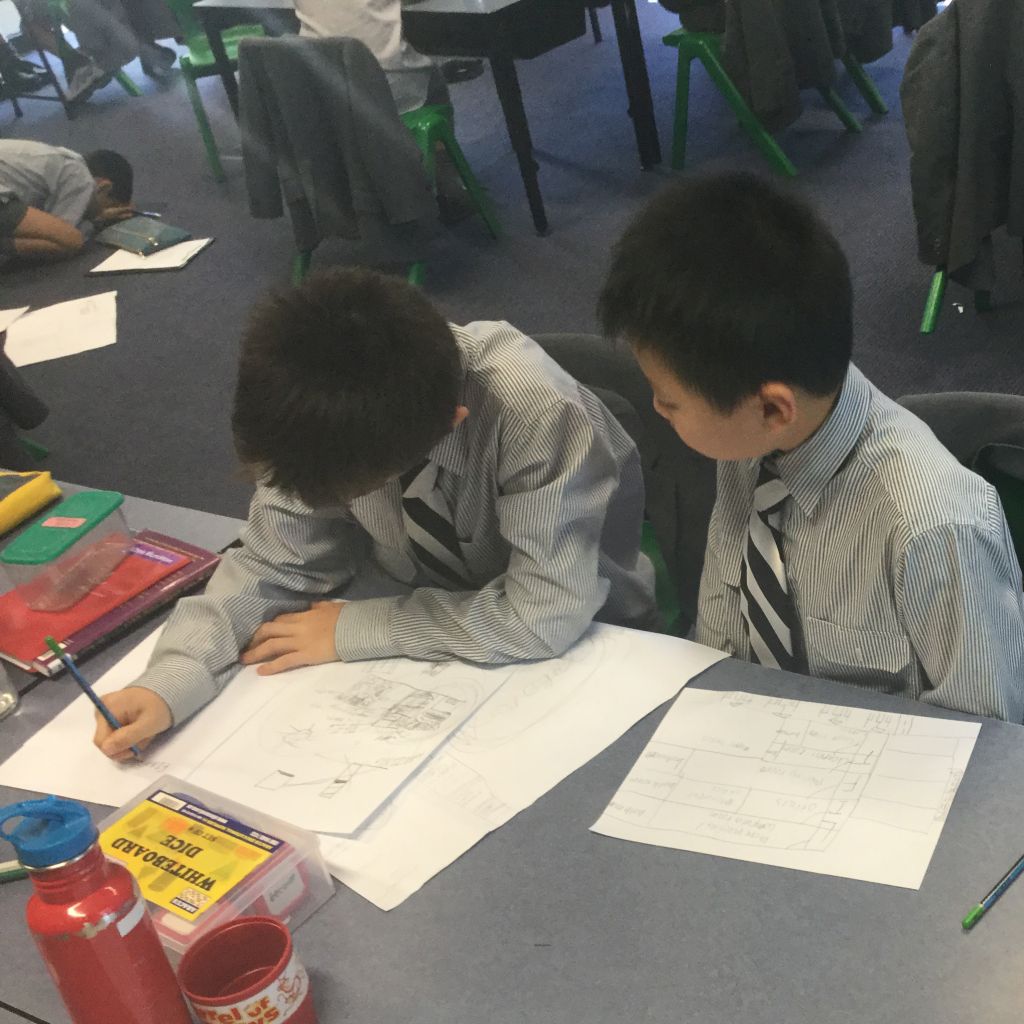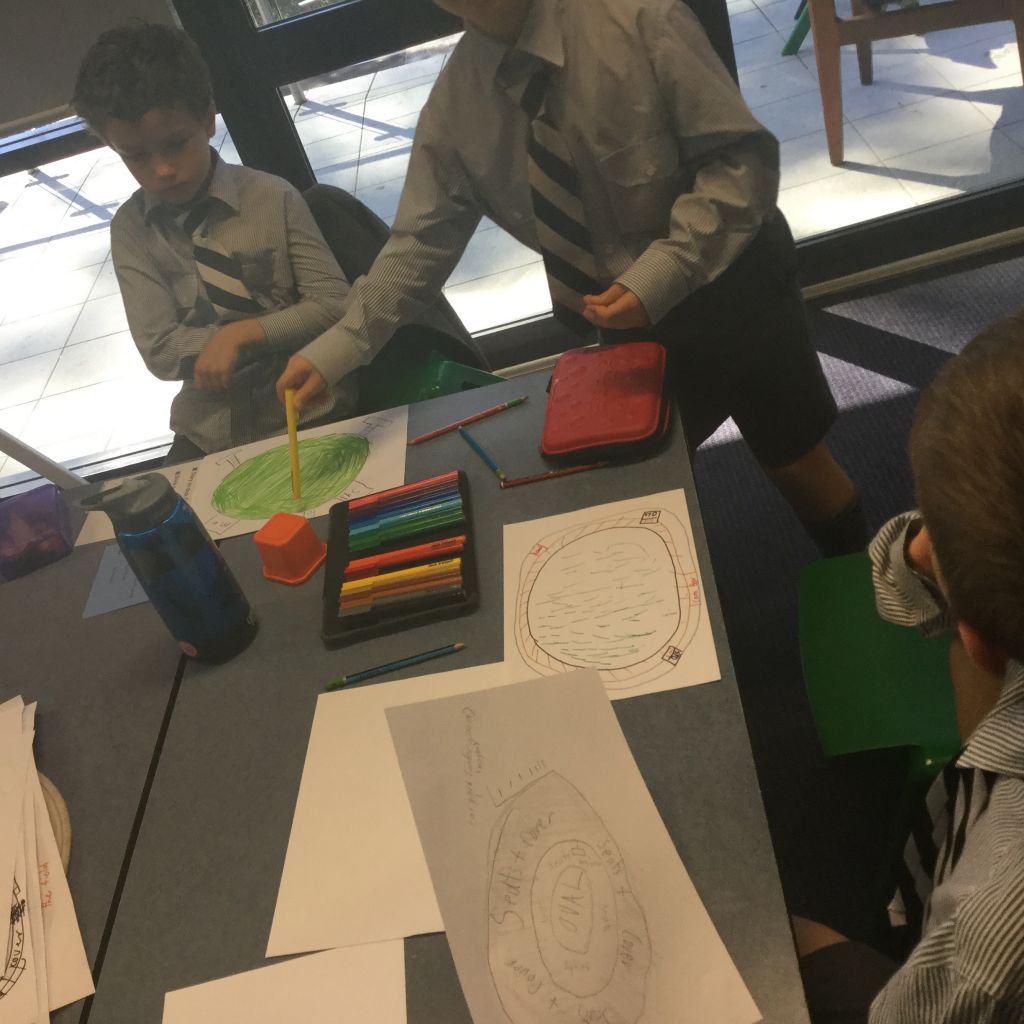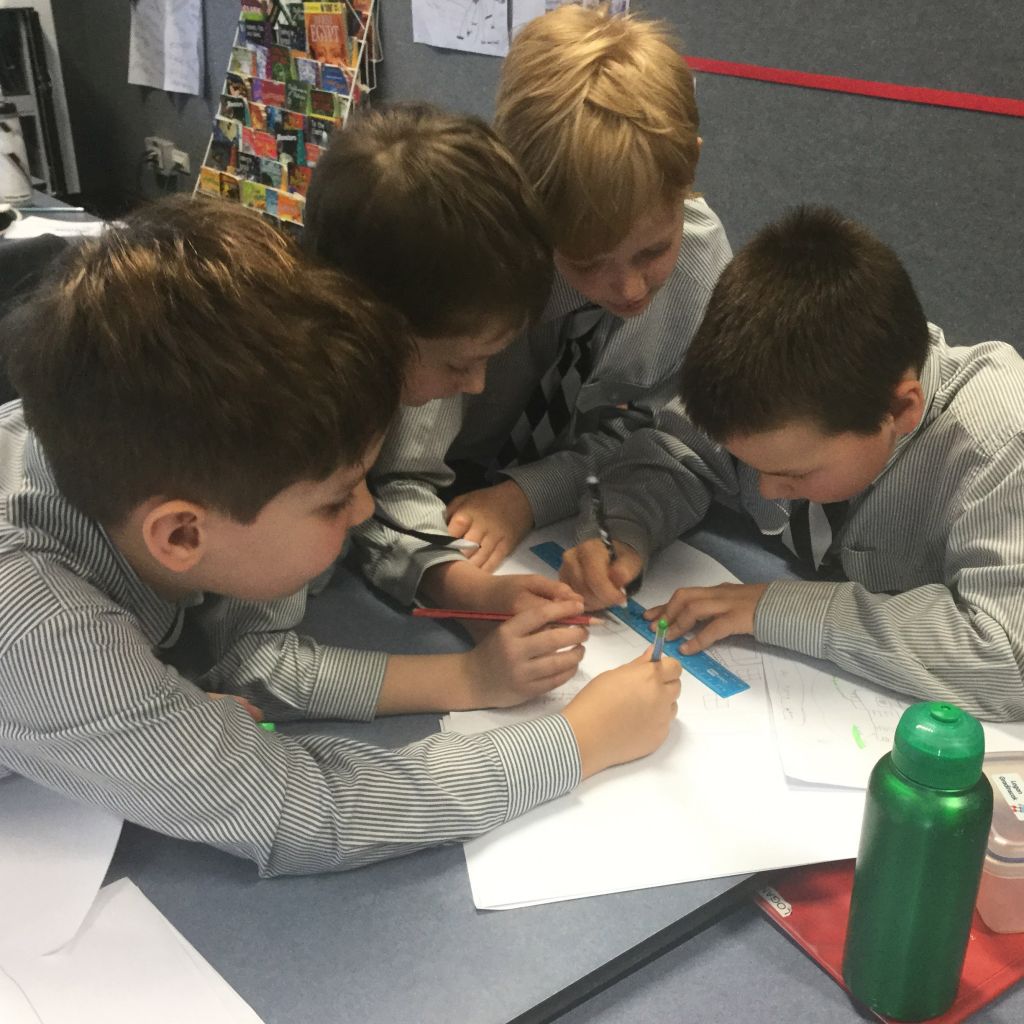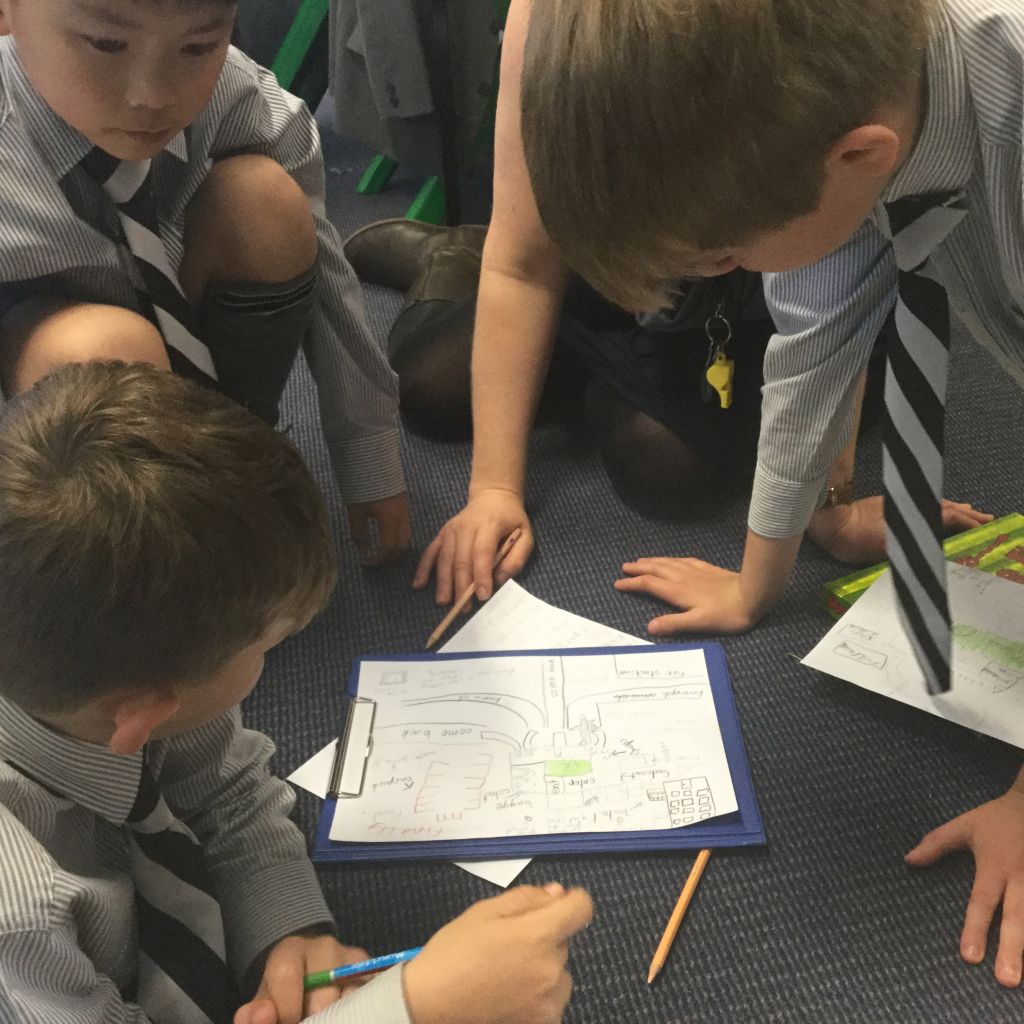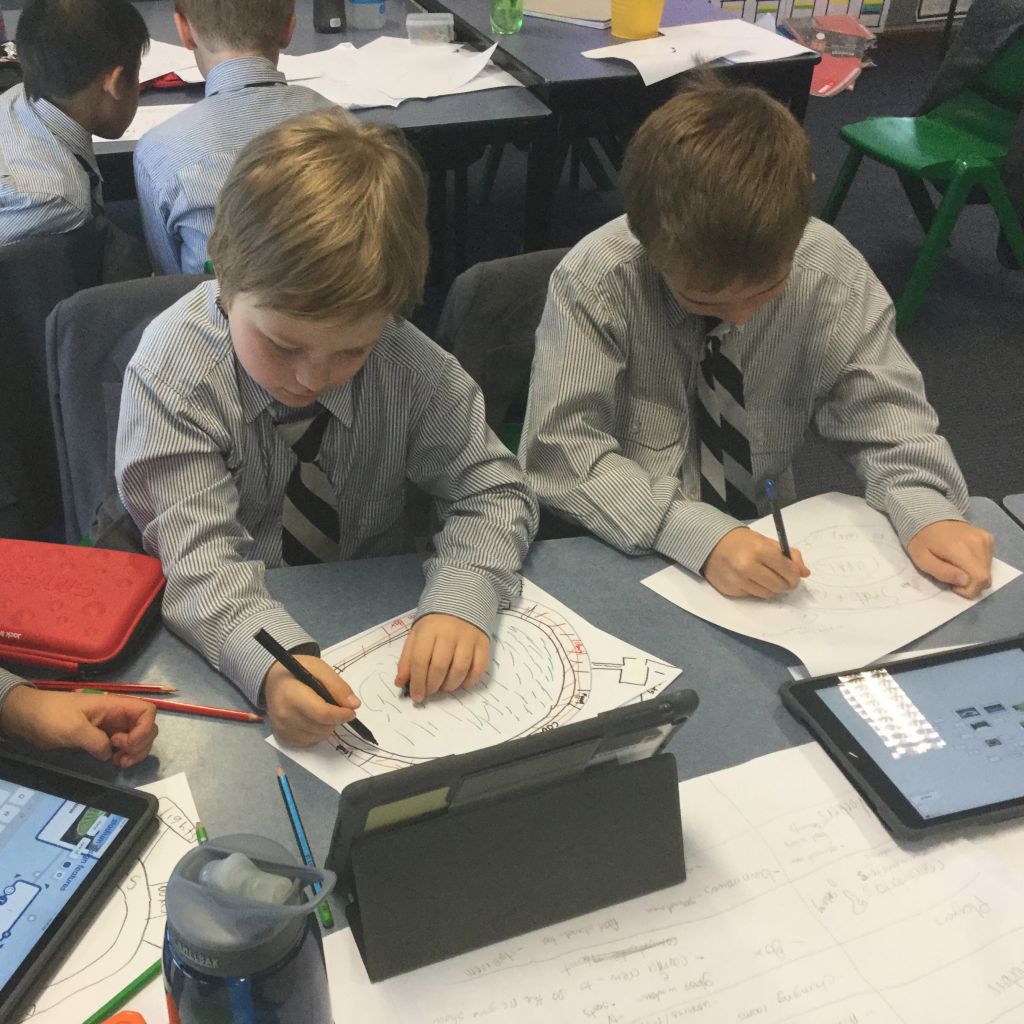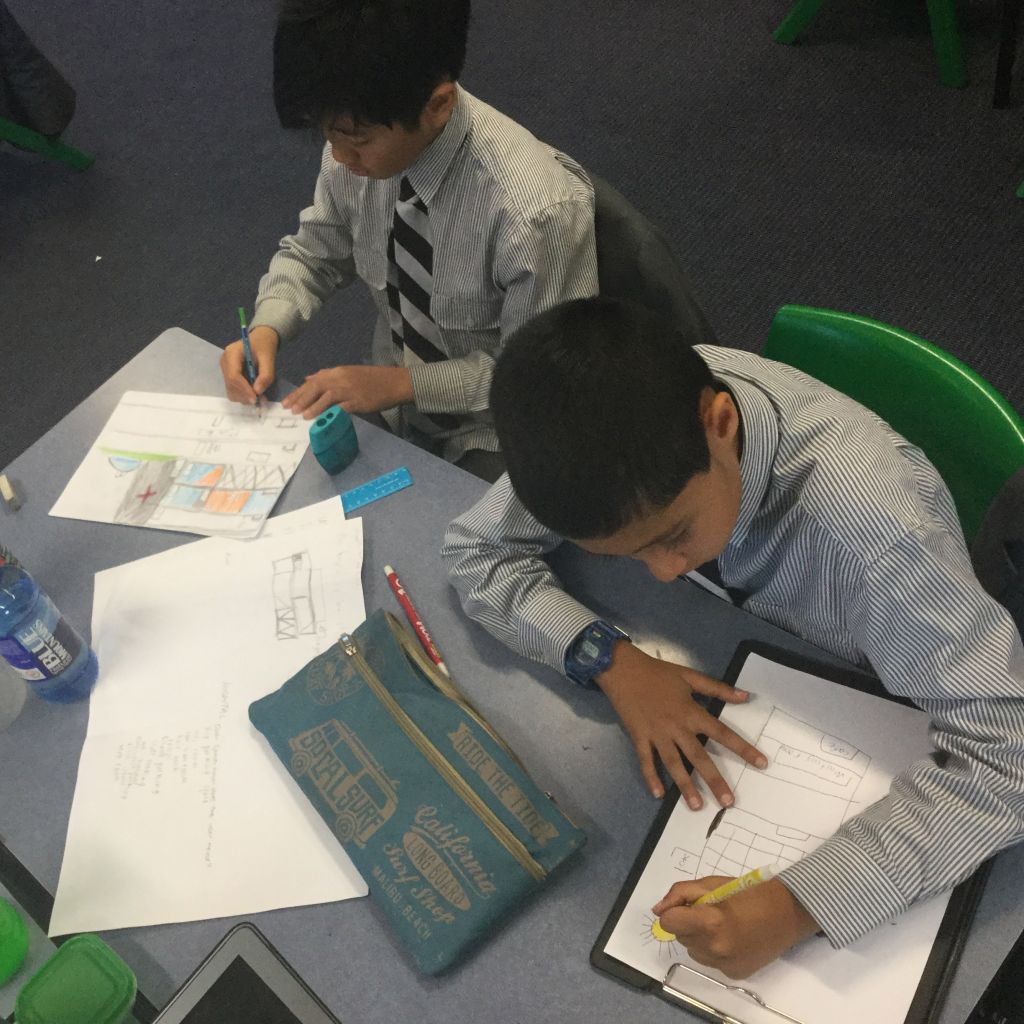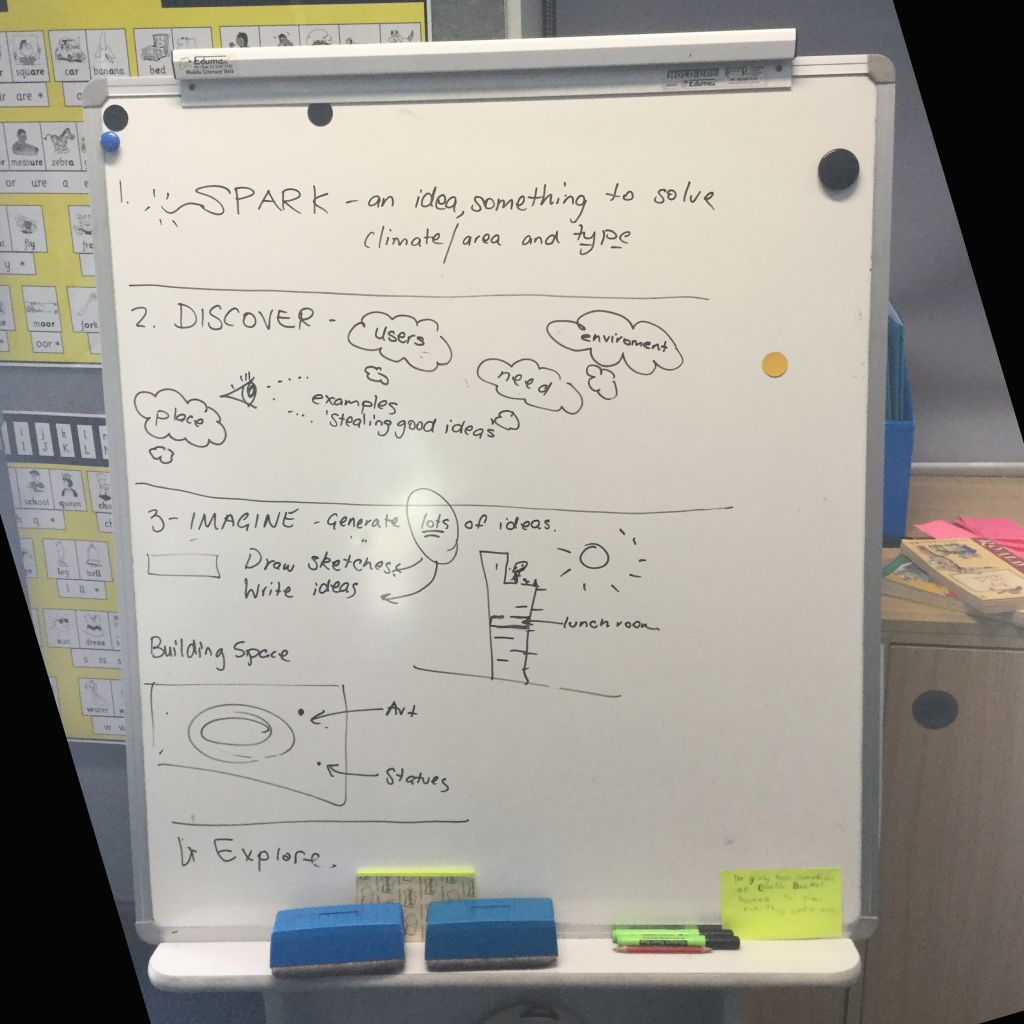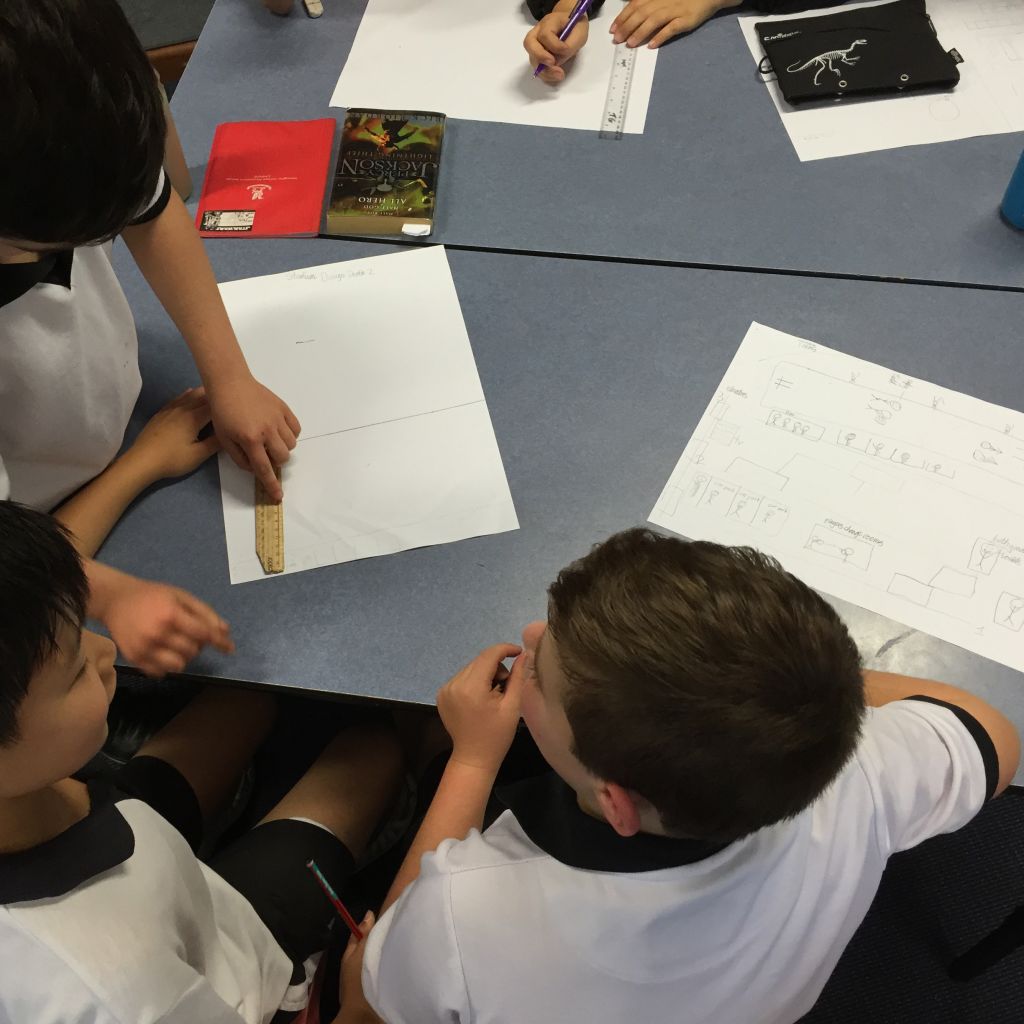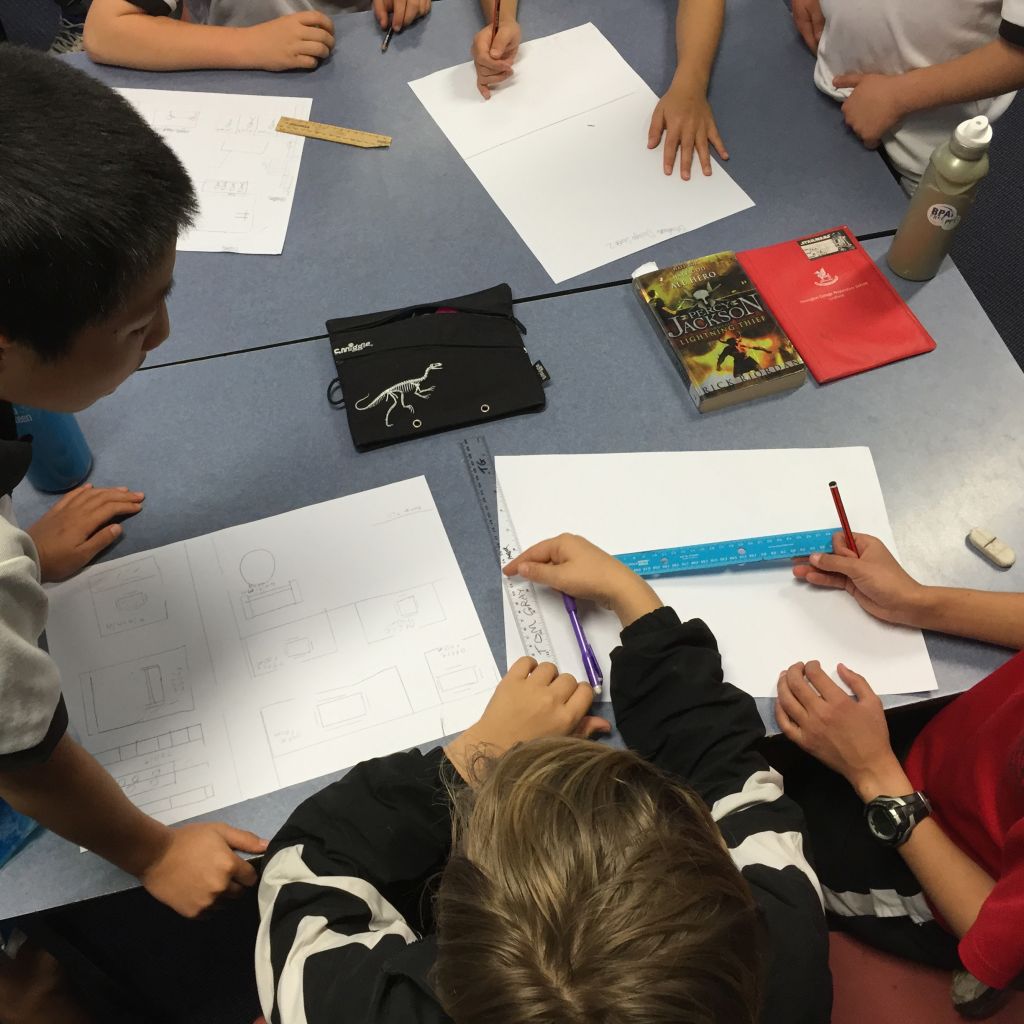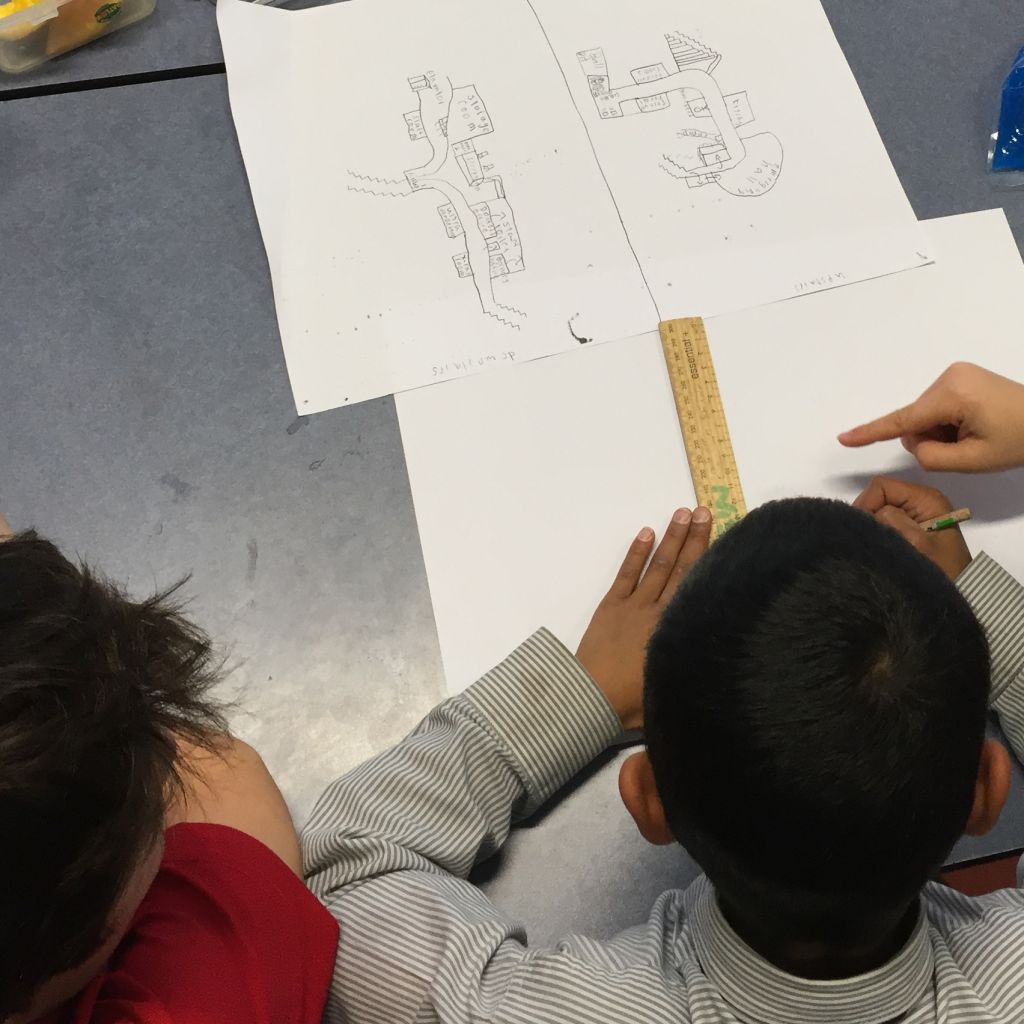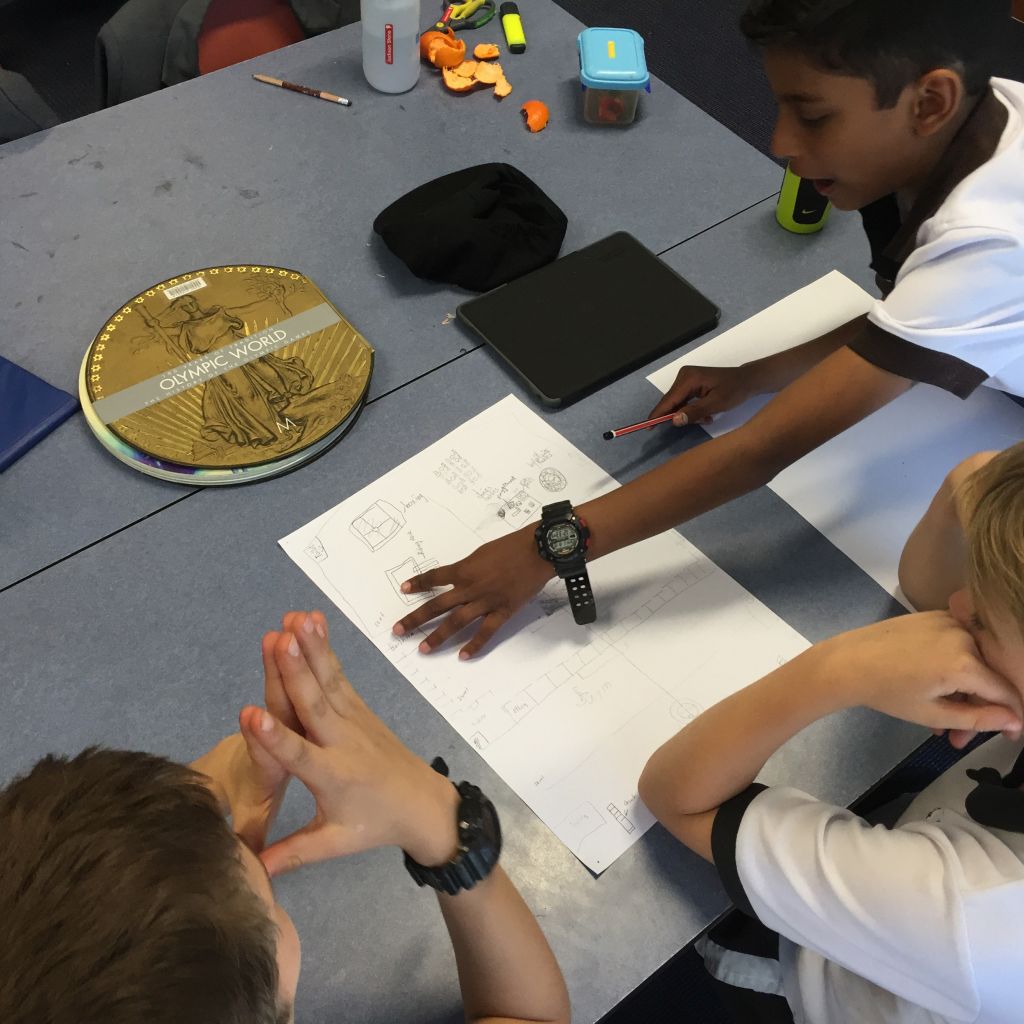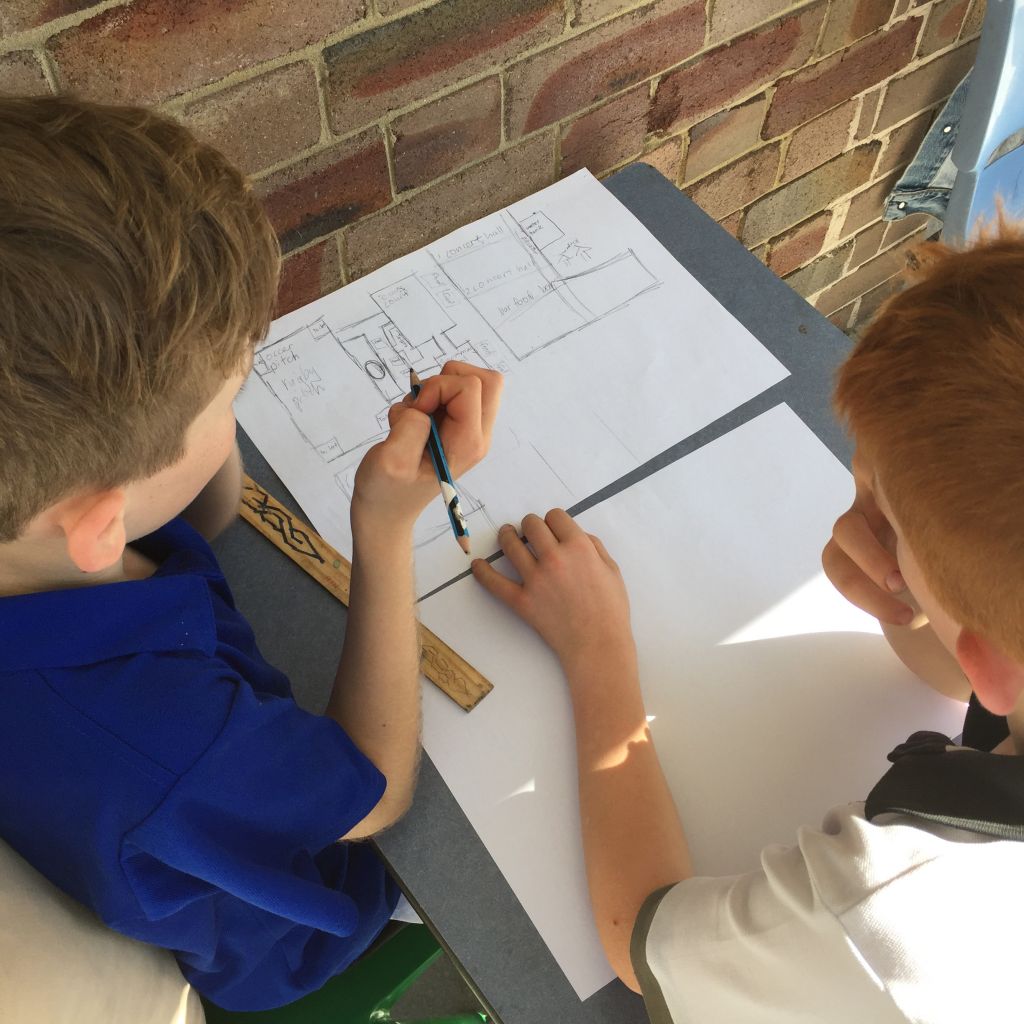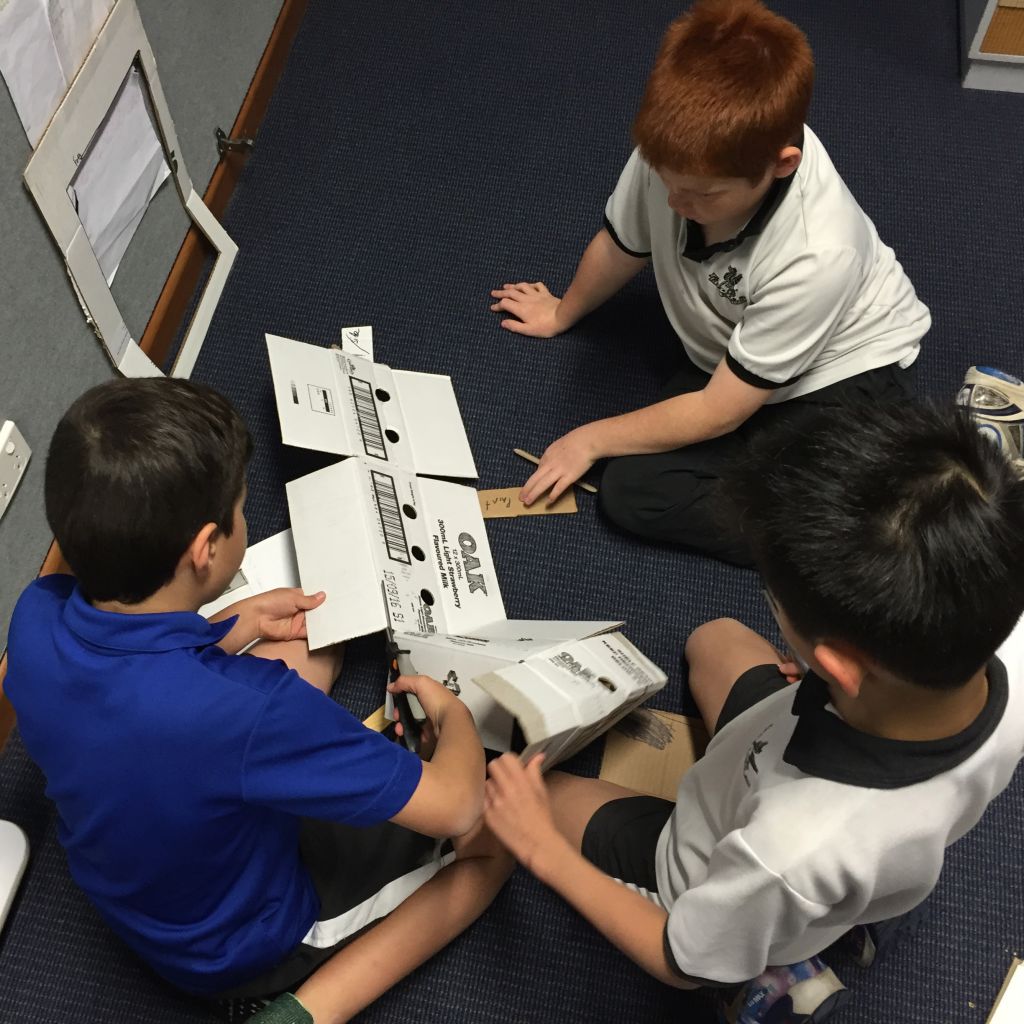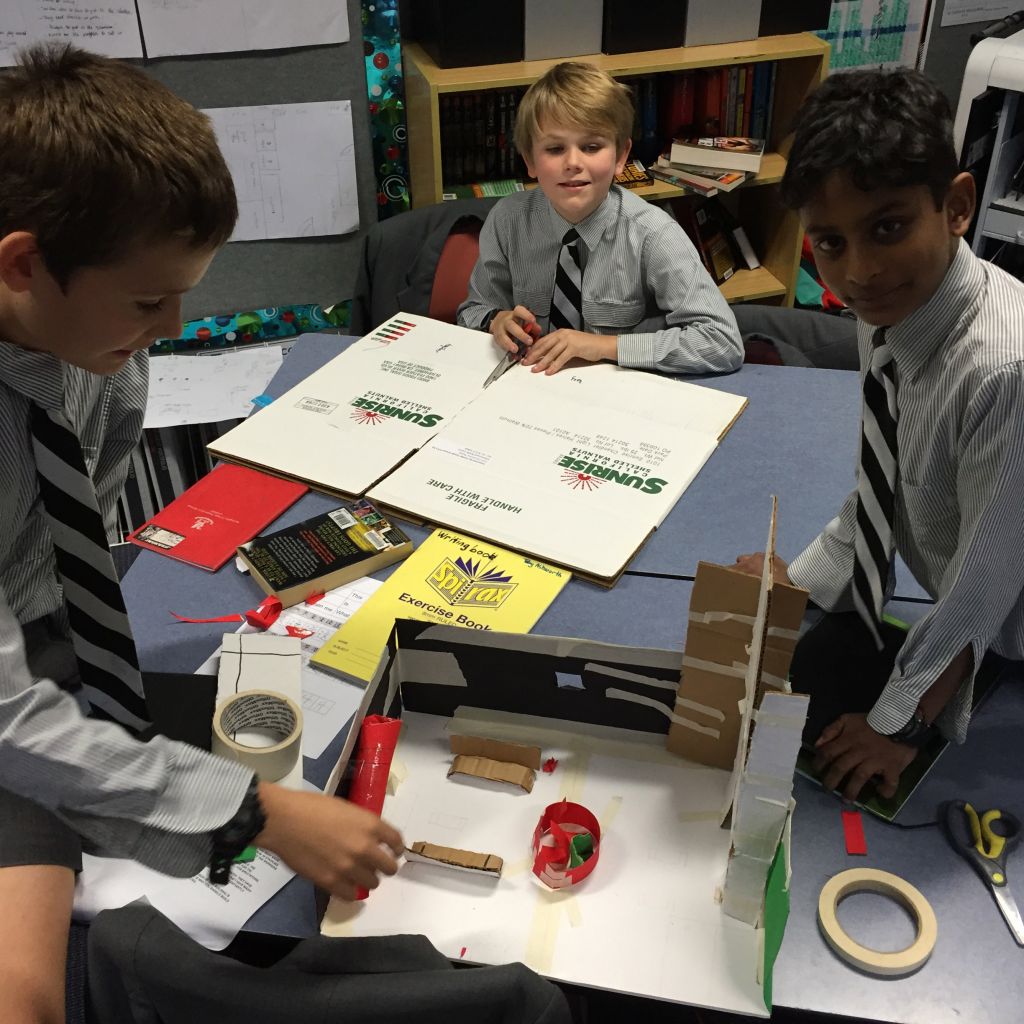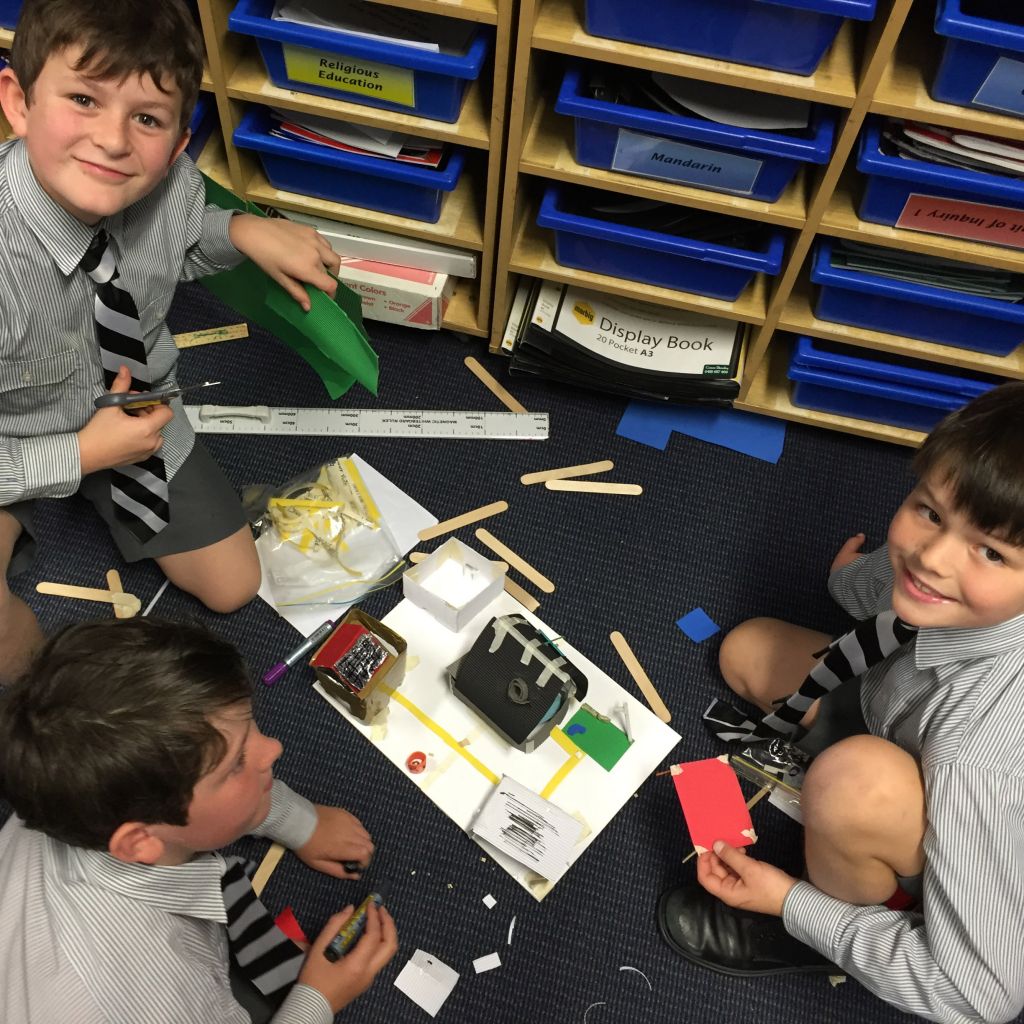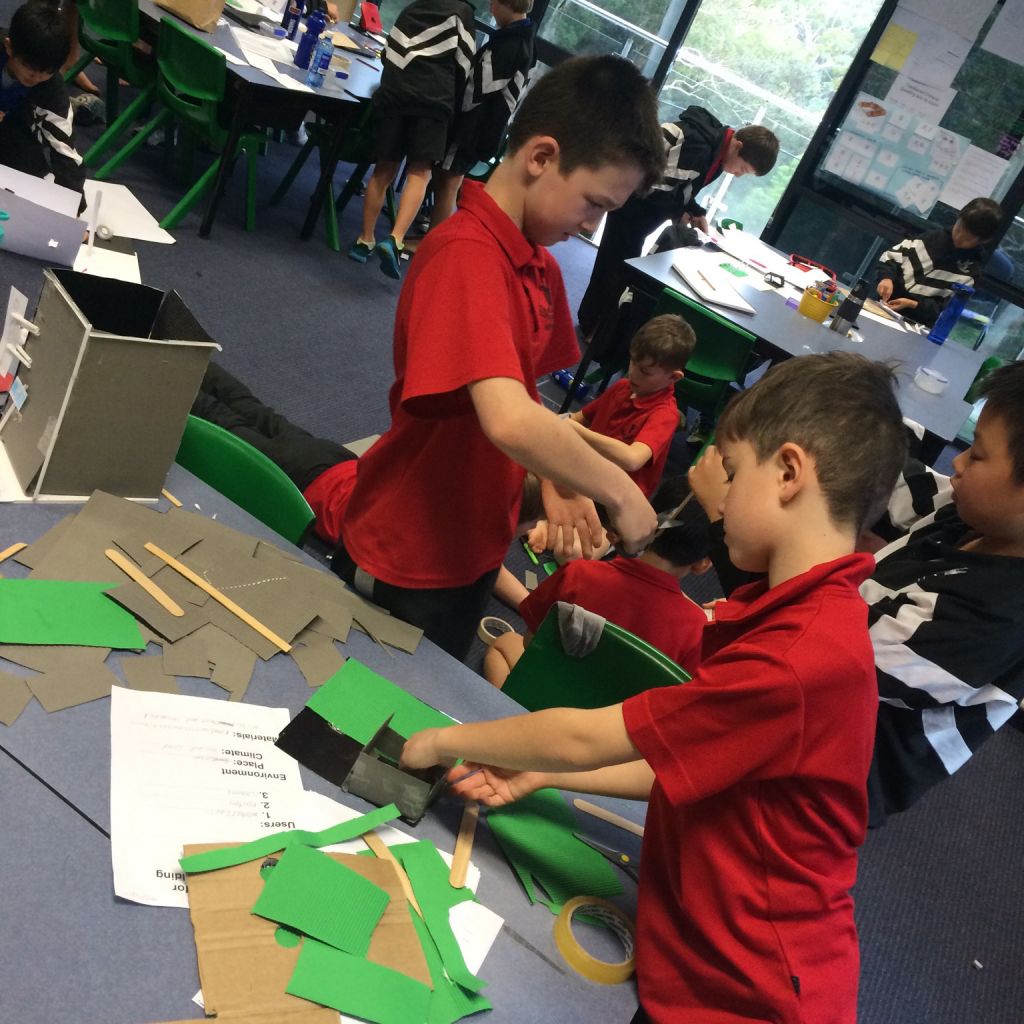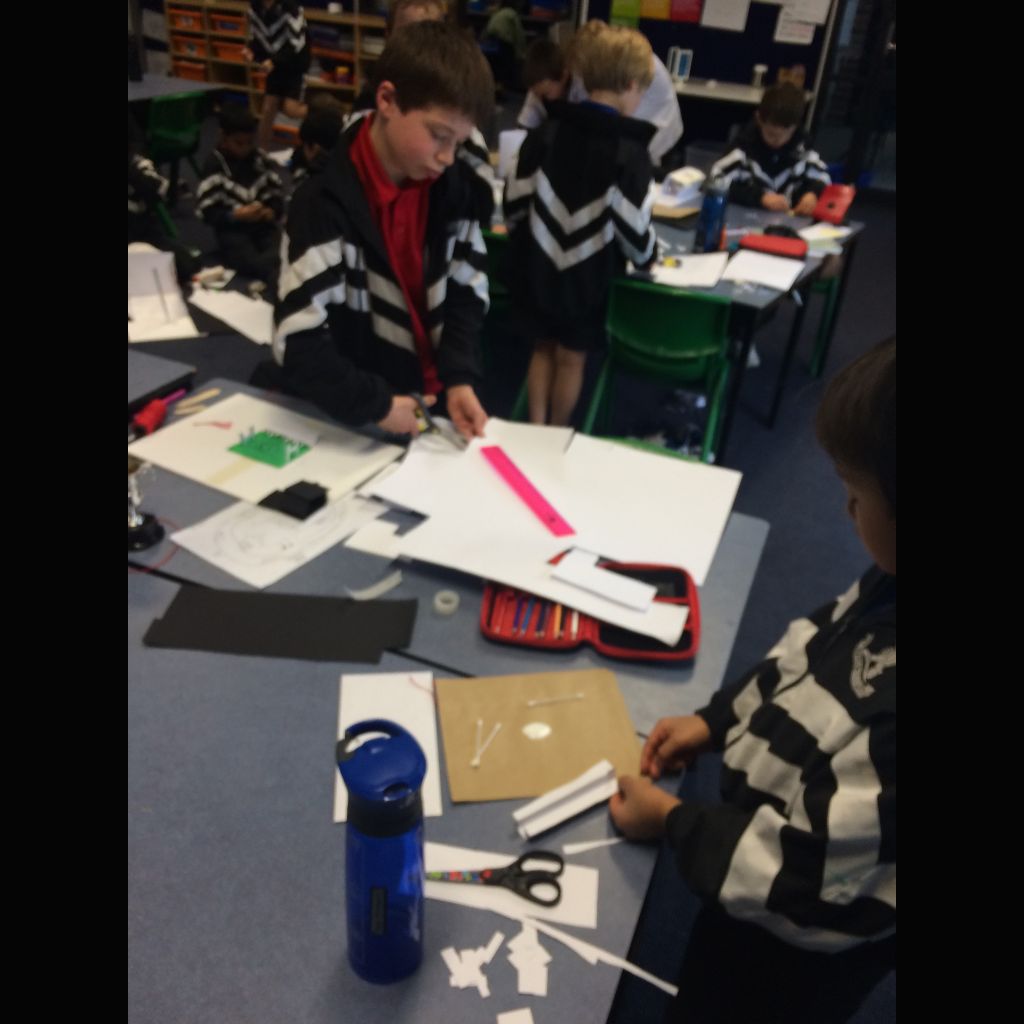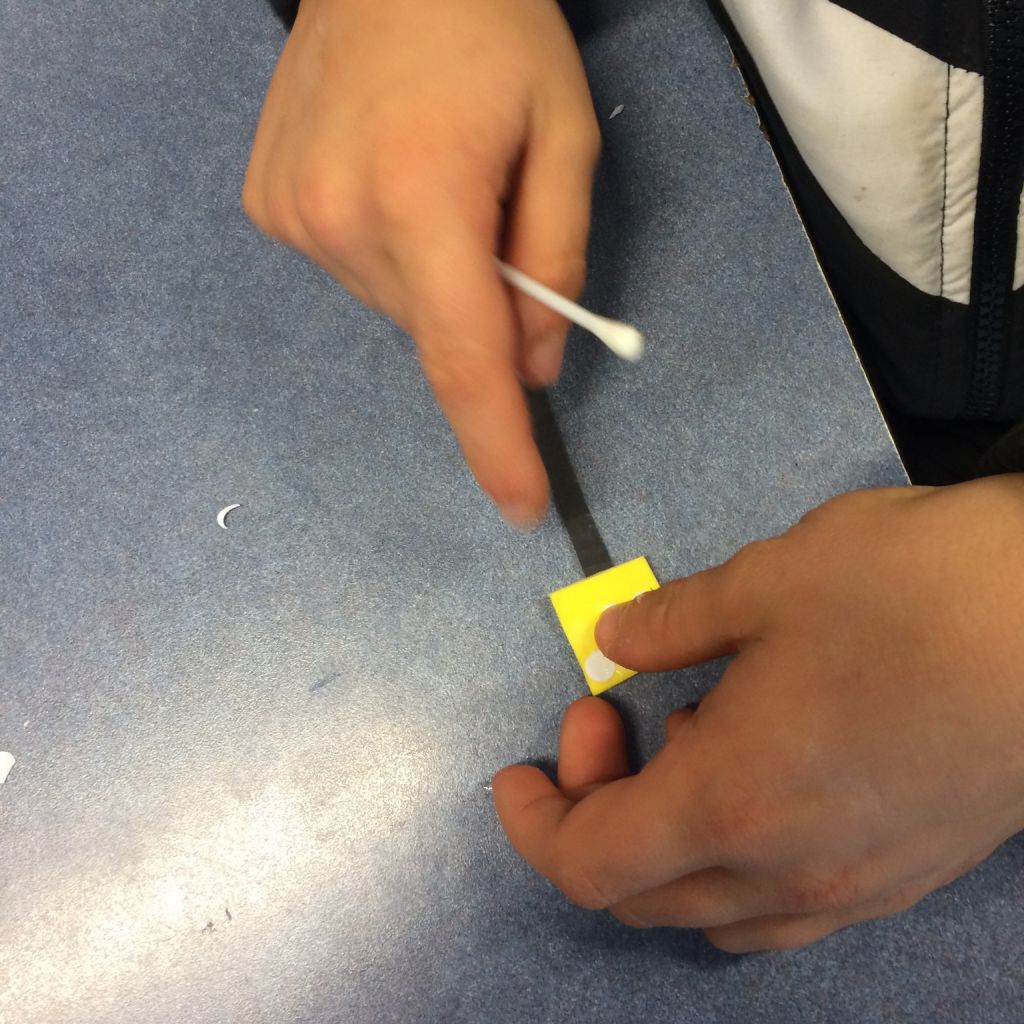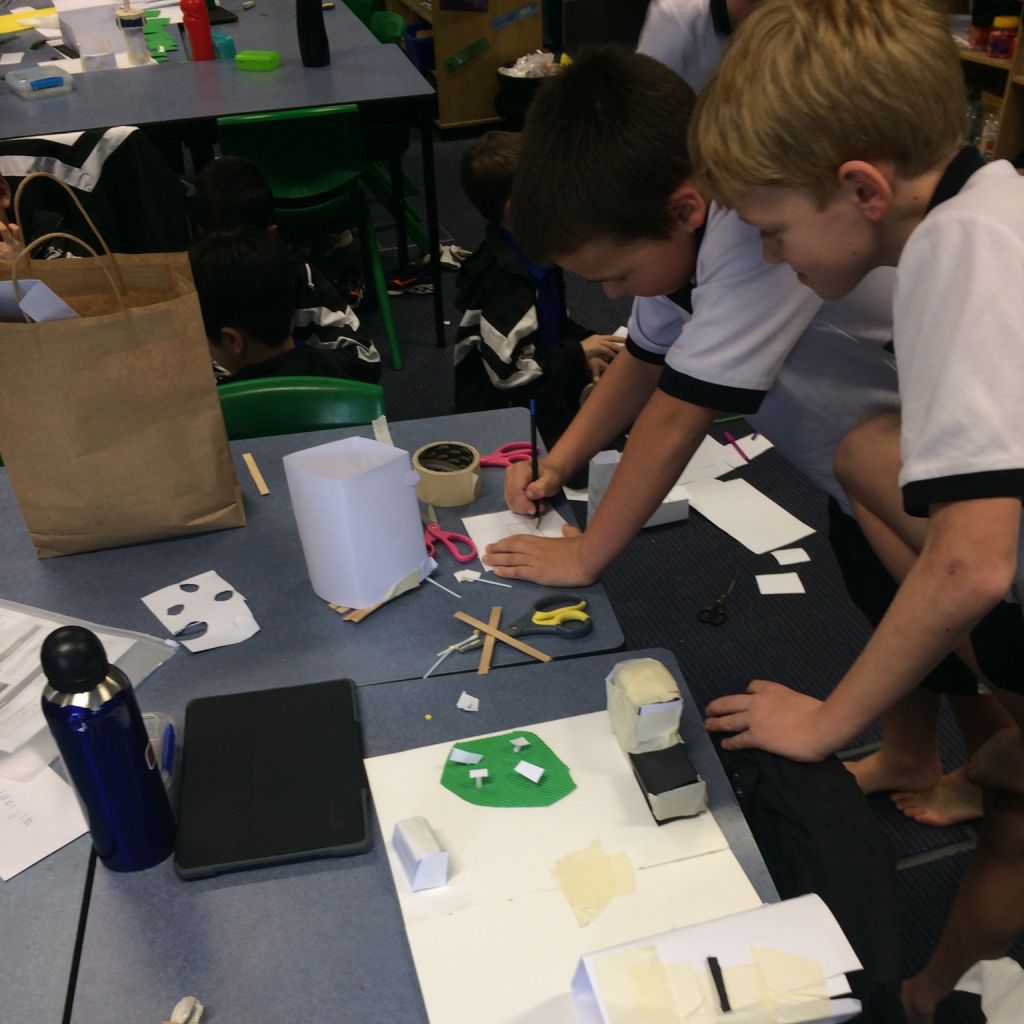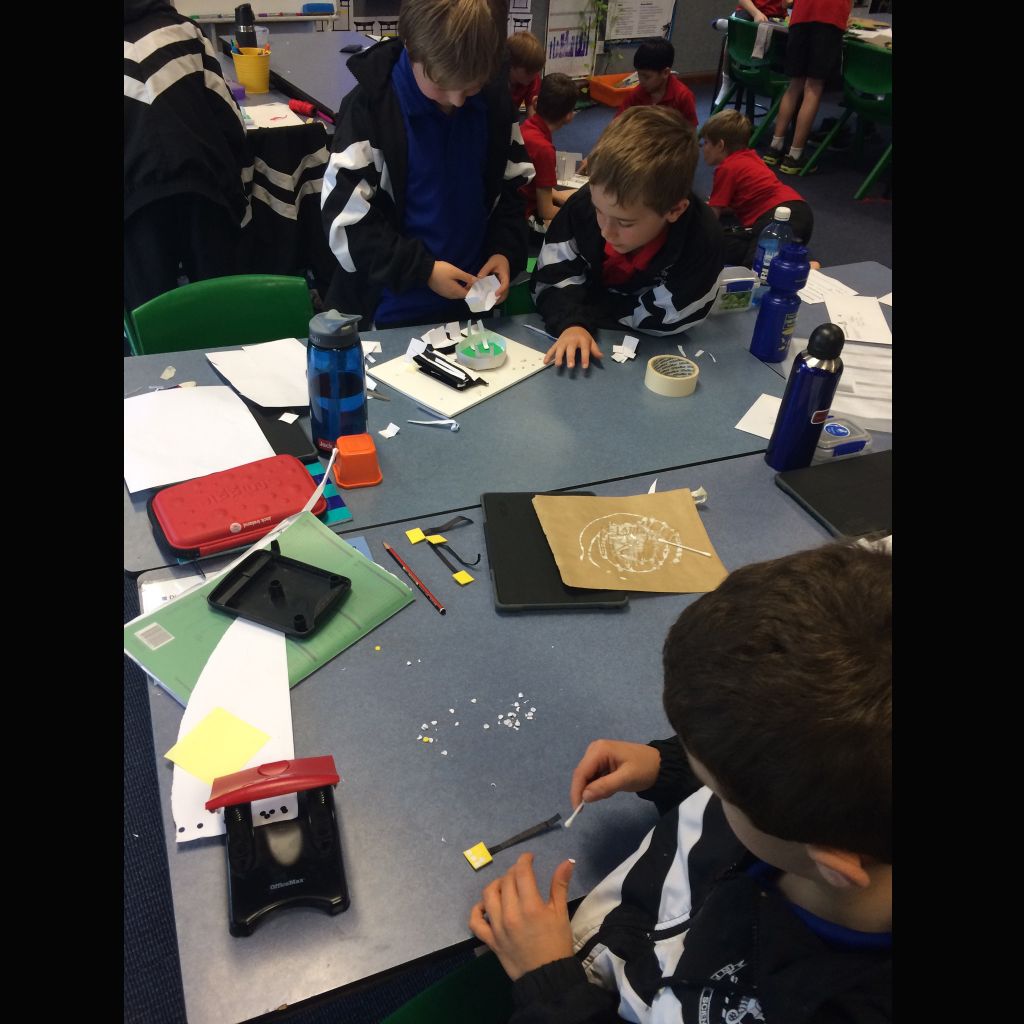Stage 2 – Design Thinking
Stage 2 have been pioneers at our school in demonstrating how the Design Thinking methodology can be implemented into the curriculum and the PYP inquiry cycle. As a school we are exploring the design thinking methodology as a powerful tool for thinking through problems and arriving at creative and robust solutions.
In its most basic terms Design Thinking has 5 key elements
1 – SPARK
You need to be interested and challenged by a problem you want to solve.
For their summative assessment of our current unit “The design of buildings and open spaces depends on the social and environmental needs of its user” the boys are required to design a building and open space. Whilst we gave them the choice in the type of building they are to create we also needed to challenge their thinking and developing problem-solving process. Each team randomly picked criteria that their building had to respond to; whether their building was going to be rural or urban and the climate their building would be situated in.
2 – DISCOVER
Empathising with the users of your building and considering what they need.
We all want to jump straight to the answer, but as the boys discovered in their provocation without first understanding the needs of their user and the environment their designed solution won’t be as successful. We have spent a week working collaboratively to empathise with the different users and their needs. They have also looked at exemplars of their building type and asked “What does this example do well? What big idea can I borrow and put into our design?”
3 – IMAGINE
Generate and consider many options.
Design thinking requires that no matter how obvious the solution may seem, many solutions should be created for consideration. The boys will generate many ideas for their building and then critically look back and decide which ideas have the most merit to move forward
4 – EXPLORE
Have a go and learn from the process.
A great idea doesn’t always make it all the way to the end. In the explore phase the boys will be encouraged to reflect throughout the process of making, to keep what works well and to be empowered to change and improve ideas that aren’t working. The explore stage creates an environment conducive to growth and experimentation, and the making of mistakes in order to achieve out of the ordinary results.
5 – SOLVE
Be brave and put it out there for feedback.
At some point we have stop, give our thinking over to others and receive feedback on what works well and how it can be improved. The boys’ final design will be a testament to their process of thinking. We are looking forward to hearing their reflections on their designed solution and their experience with the design thinking process.
Carol Peterson and Shayne Pollard – Stage 2 Teachers



